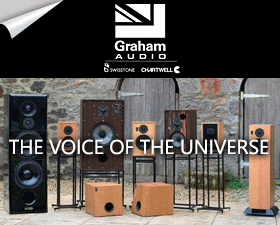Not really any concrete conclusions, Fernando

. The point I am trying to make in this thread, is that when one listens to a 'live' band or orchestra, in a medium to large hall; the sound that one hears is in no way 'constricted' or without seemingly endless 'expansion'. In our homes, I have never heard a speaker...large or small, that can portray both of these aspects of the 'live' experience

. I know there are people here and elsewhere, who believe that this is NOT the case and that we can reproduce exactly both of these aspects in our room...however, all I can say to these same people is PLEASE go and listen to the 'live' event and PLEASE listen hard enough to contemplate what I am saying

.
I do hold to the belief that all speakers that I have heard, are shall we say- 'voiced' to a particular genre.
IMHO, my 'live' experience has nothing to do with the ability of a large speaker vs. a small speaker and whether it is easier to construct a better performing large speaker than a small speaker.
My experience is that in a small room, the small speaker can portray more intimacy or "exacting" detail due to the 'near field' listening experience ( Not usual for a large speaker in the same size room, although I suppose it may be possible)....I have NOT had this same experience in a large room, regardless of the size of speaker.
Not that there is anything wrong with a large room, as that enables the speaker ( usually a large speaker) to portray the width of the stage and the bottom octave or so more realistically. Like I said, you take your pick and choose your compromise.


















